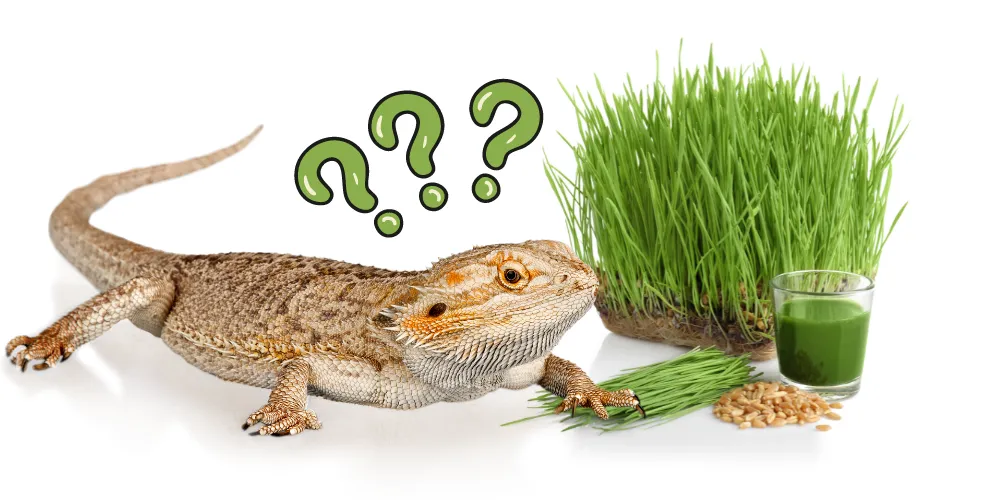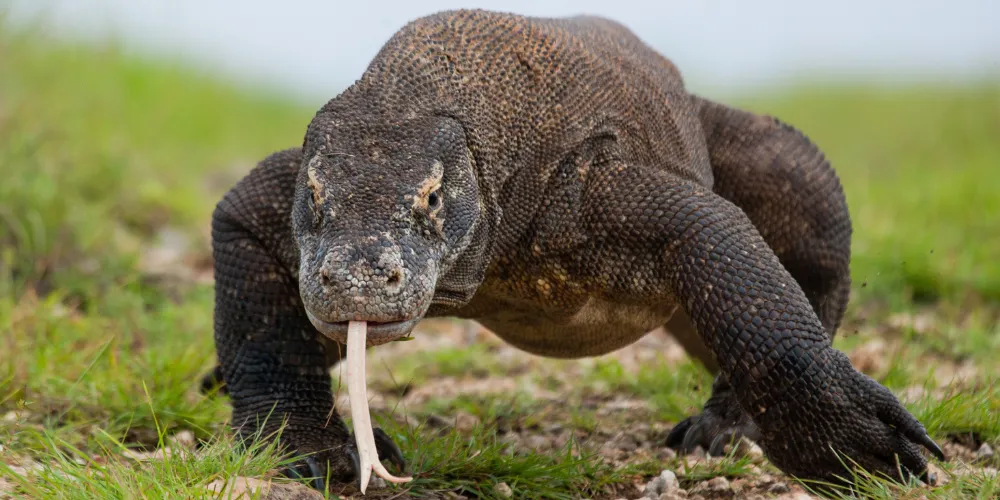Wheatgrass and your Bearded Dragon
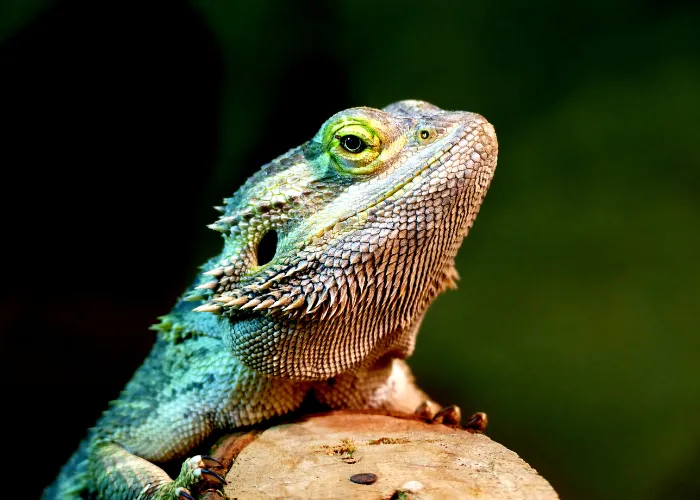 Wheatgrass is a type of grass that is grown from wheat plants. This grass is a common, cheap, and available food source that can be included with other food types. Examples below:
Wheatgrass is a type of grass that is grown from wheat plants. This grass is a common, cheap, and available food source that can be included with other food types. Examples below:
Dietary requirements differ from species to species, and individual to individual, leaving the answer to this question a bit foggy.
Although wheatgrass is packed with all kinds of nutritious elements, there’s nothing new that they don’t already receive from other foods. As is always the case, moderation is necessary.
Wheatgrass can benefit your beardie in several ways, supporting a healthy immune system and harboring anti-inflammatory nutrients.
You can grow wheatgrass indoors or at home or be picked up in most pet stores or purchased online.
If you decide to include wheatgrass in your dragon’s daily diet, start with a little bit to monitor how it likes or handles it. If all is well, slowly increase the daily amount added to its regular food.
New foods might be harsh on a beardie when given too much, so contacting your vet might be a good idea for specifics about how much to start with and for how long before upping the amount.
How to Serve Your Pet Beardies Wheat Grass Plant
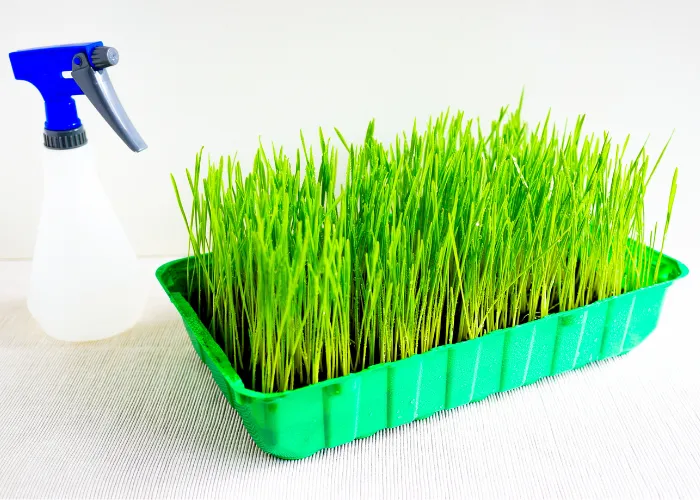
The Risks Associated when Beardies Eat Wheatgrass
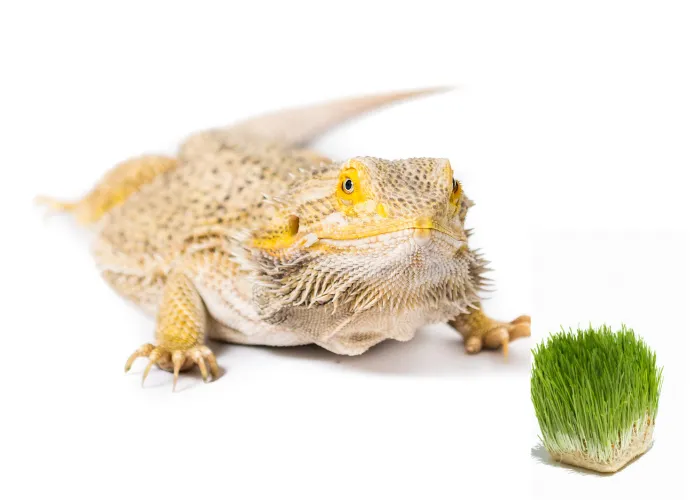
Wheatgrass is usually considered harmless for Bearded Dragons. But there are a few hazards that may come.
Choking is one risk. Wheatgrass’s stalk can be fairly long and become a hazard if your pet tries to swallow it at length. Chop it up before giving it to your bearded dragon.
Secondly, the edges of wheatgrass blades can be sharp enough to make tiny slices in your dragon’s mouth.
If the grass blades are rigid enough to have sharp edges, try to cut them off or mess them up enough to be a non-factor.
The third risk is the presence of mycotoxins. Mycotoxins exist when fungi taint the grass, which can be harmful if eaten by your lizard.
Wheatgrass grown responsibly by reputable sources (or responsible owners at home) won’t typically have this issue, but always keep an eye open for it, just in case.
Final Thoughts
 Wheatgrass has become a popular ingredient in the health and superfoods supplement industry.
Wheatgrass has become a popular ingredient in the health and superfoods supplement industry.
- Can Bearded Dragons Eat Papaya?
- Can Bearded Dragons Eat Bananas:
- Can Bearded Dragons Eat Stink Bugs?
- Can Bearded Dragons Eat Vinegar
RELATED QUESTIONS:
Can you Grow Wheatgrass to Feed Your Beardie?
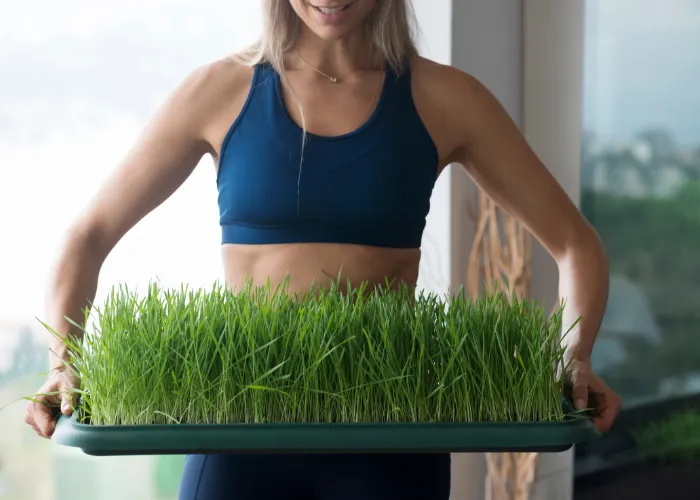
Wheatgrass is very easy to grow. If you’re growing it to feed it to your beardie, there are a few precautions you should consider. There are two, and they are fairly obvious- other pets and pesticides.
Other Animals
Cats and dogs are something to keep your eyes on, whether you’re growing the grass indoors or out. Both will like to eat the grass.
People often use wheatgrass to deter cats and dogs from eating the leaves off their indoor plants.
This variety of grass is non-toxic to both cats and dogs. Should they decide that wheatgrass is safe for them to eat, but that doesn’t help out your lizard?
Pick a place where other animals will only defeat the purpose of growing it for your lizard.
If you’ve selected a nice outdoor spot, think about your dog (or neighborhood dogs).
Nobody wants their dragon’s food to soil upon or use as a toilet. I’ve made my point. Make sure that there isn’t a way for dogs to spend any time on the wheatgrass.
Pesticides and Chemicals
If you’re going through the trouble of raising food from seed to feed your beardie, pesticides or other chemicals should be minimalized, if not completely removed, as an option.
There are ways to fertilize the grass and keep intrusive insects from becoming a problem without introducing things that may incorporate themselves into the food.
This quick-growing type of grass is edible as “wheatgrass” not long after being planted before it undergoes further growth and metamorphosis into a full-on wheat plant.
From planting to harvest, it’s only about 10 days to 2 weeks till the plant is ready to be harvested. So, in that short time, I’m sure the insects won’t become too much of a problem.
REFERENCES:
1. Bearded dragons – feeding: VCA Animal Hospital. Vca. (n.d.). Retrieved January 29, 2023, from https://vcahospitals.com/know-your-pet/bearded-dragons-feeding
2. Gardiner, J. (2021, March 23). Bearded dragon care. Animal Health Topics / School of Veterinary Medicine. Retrieved January 29, 2023, from https://healthtopics.vetmed.ucdavis.edu/health-topics/exotics/bearded-dragon-care

